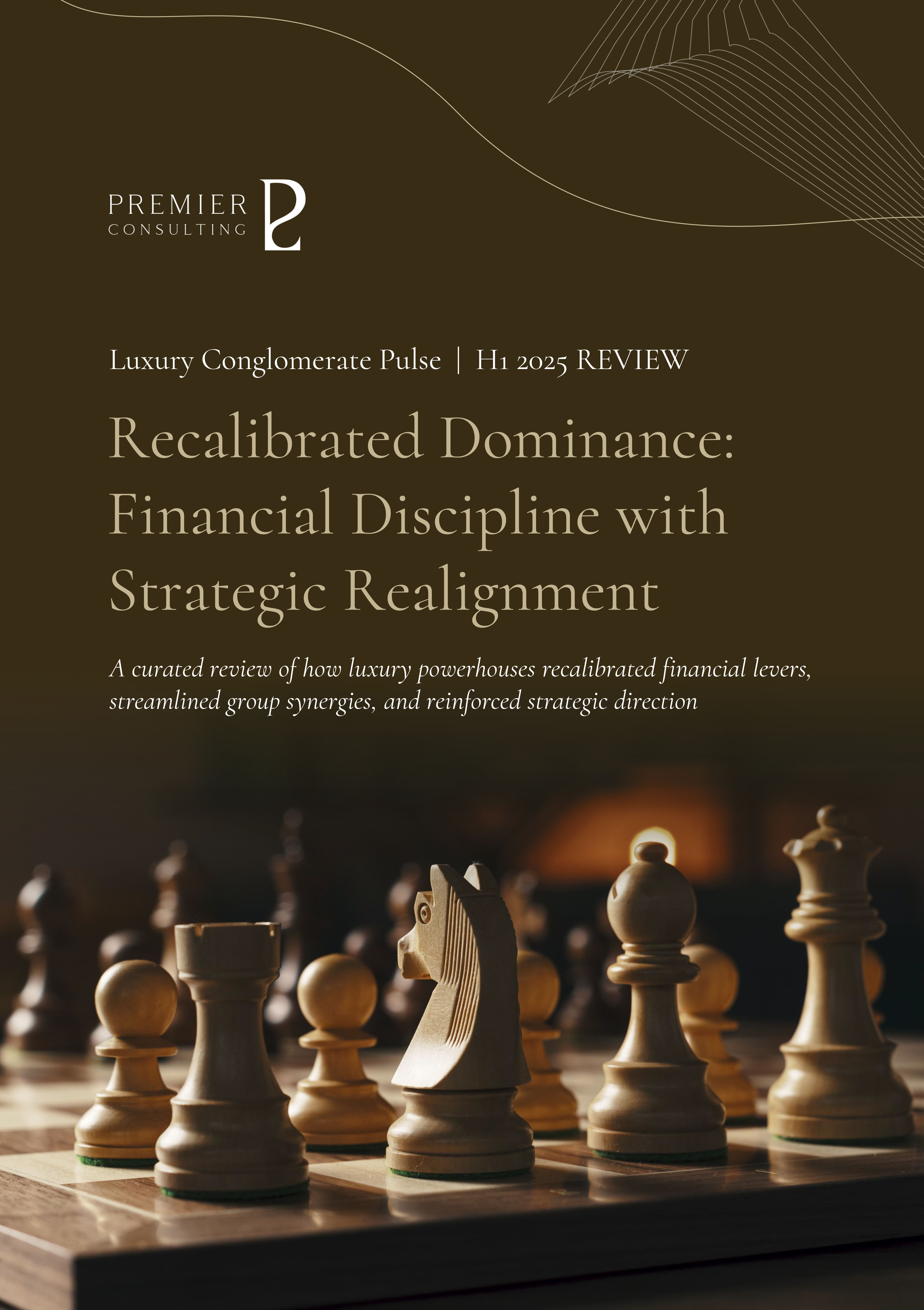
Recalibrated Dominance:
Financial Discipline with Strategic Realignment
Recalibrated Dominance:
Financial Discipline with Strategic Realignment

Recalibrated Dominance:
Financial Discipline with Strategic Realignment
Dec 10, 2025
Examining H1 2025 performance divergence and strategic pivots of global luxury groups to uncover market rebalancing under cyclical pressures and chart the future shaped by innovation, operational precision, and capital discipline.
A cold wave surges forth, bringing shifting fortunes and divergent fates.
As the curtain rose on 2025, the luxury market unfolded with striking asymmetry—where once-parallel giants diverged sharply. Some maisons faltered under weightier headwinds, while others ascended to unprecedented heights, outpacing even the elevated benchmark of H1 2024.
Beneath this divergence lies a deeper realignment: enduring value today is no longer dictated by scale alone, but by the disciplined interplay of heritage, innovation, and financial stewardship.
In this shifting landscape, the contours of market supremacy are redrawn—luxury maisons unveiled their H1 2025 results, recalibrating their trajectories with distinct strategic intent:
- LVMH Group
Fashion & Leather Goods sales declined, weighing on overall revenue performance as profitability tightened in parallel. Regional performance became increasingly volatile, and the recovery in China fell short of expectations. The Group strengthened cost controls and relied on support from diversified business segments to maintain its scale and market activity, continuing to reinforce its influence within the industry.
- Hermès
Maintaining a high-growth trajectory, both revenue and profit continued to rise, securing the Group’s position among the global luxury leaders. Despite slower momentum in China, the brand demonstrated robust performance across the Americas and the Middle East. By exercising discipline in capacity expansion and focusing on core categories and flagship experiences, the Group continued to reinforce its market leadership and standing at the pinnacle of the luxury sector.
- Chanel
In 2024, the Group recorded its first simultaneous decline in both sales and profit, with operating income dropping nearly 30% year-on-year. Fragrance & Beauty and travel retail channels remained resilient, serving as key growth pillars amid the cyclical adjustment. Despite softening demand in the Chinese and American markets, the brand expanded capital expenditure to nearly $1.8 billion, advancing supply chain integration, boutique network expansion, and customer experience transformation — a clear demonstration of its steadfast commitment to long-term brand equity.
- Prada Group
Against a backdrop of decelerating growth in the Group’s flagship brand and a sharp slowdown in the Chinese market, Miu Miu emerged as a key driver of moderate overall growth. Sales surged nearly 50% year-on-year, with strong performance across both Western and Asia-Pacific markets — underscoring the commercial resonance of its cultural momentum. The Group continued to attract high-net-worth clientele and sustained high-quality profitability and a solid foundation for long-term development through retail optimization and strategic capital deployment.
- Richemont Group
Revenue growth continued under the leadership of the Jewellery Maisons, while the Specialist Watchmakers segment entered a phase of transitional adjustment. Positive momentum persisted in Western markets, with Japan maintaining growth traction, though recovery in Greater China remained sluggish. By focusing on high-net-worth clientele, refining product value architecture, and recalibrating operational rhythms, the Group demonstrated resilience across cycles and a strong command of market dynamics.
- Kering Group
Financial performance remained subdued, as a significant year-on-year sales decline in core brand Gucci weighed heavily on overall revenue. Segments such as beauty and eyewear sustained growth momentum, offering structural support amid broader weakness. Regional trends diverged, with downward pressure particularly pronounced in Asia. The Group accelerated its strategic overhaul, reshaping brand direction through leadership transitions and creative team renewals, while prioritizing cost discipline and channel rationalization to safeguard profitability.
Resilience is anchored in three unshakable pillars: strategic pricing to safeguard profitability, harnessing digital expansion to forecast future demand, and optimizing capital allocation to propel sustainable growth. Visionary industry leaders will continually steer their brands through market volatility with deftness and resolve, fusing creativity, operational acumen, and financial foresight.
Disruption, once a threat, becomes the crucible for reinvention—
Where every strategic pivot turns headwinds into tailwinds.
DOWNLOADS

Full Infographic (39 pages)










